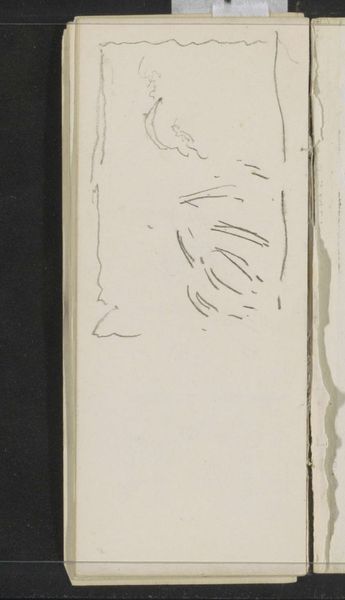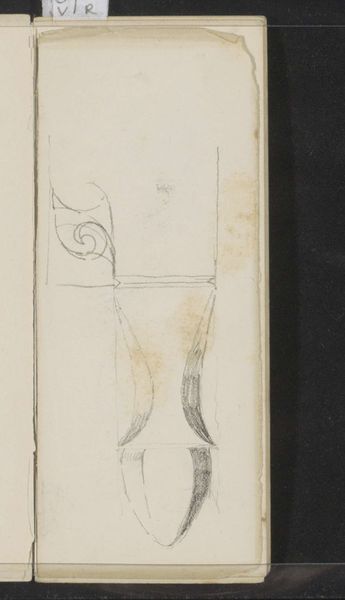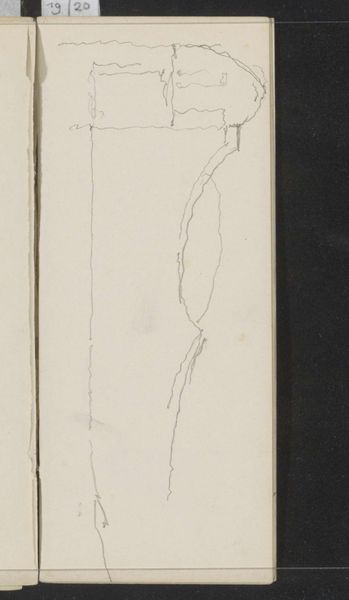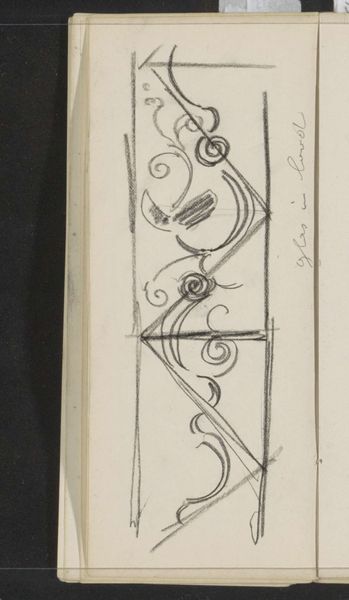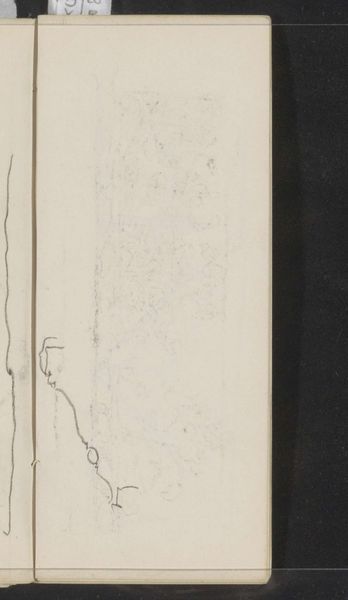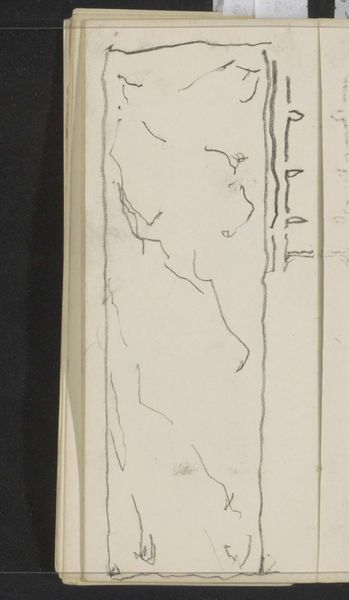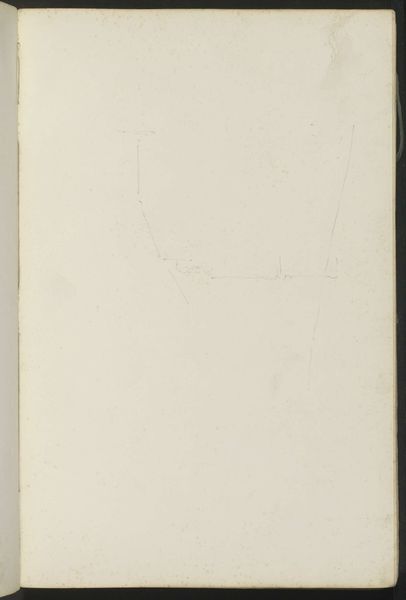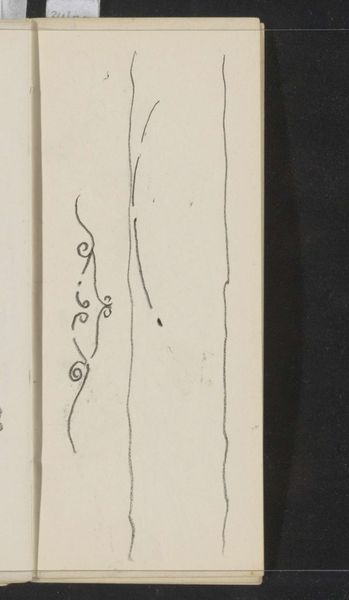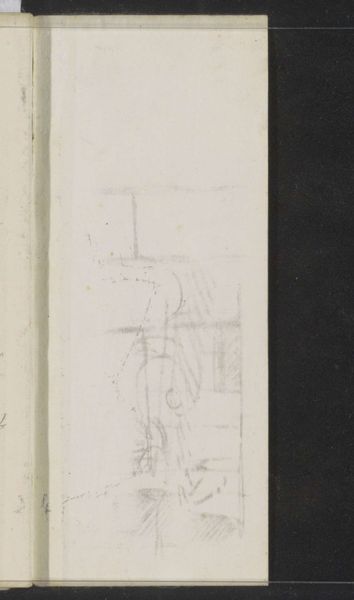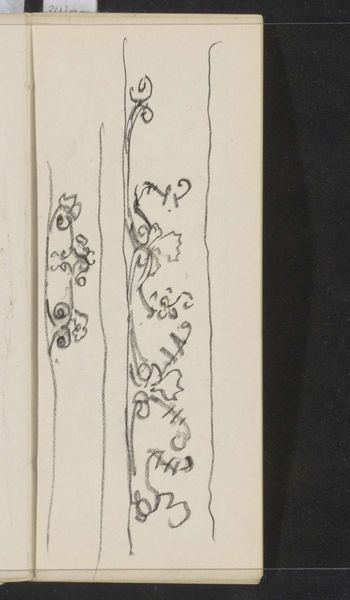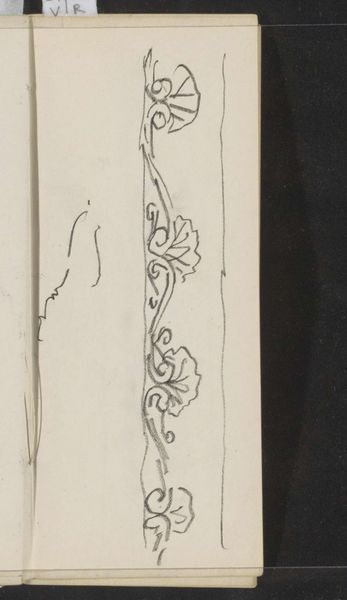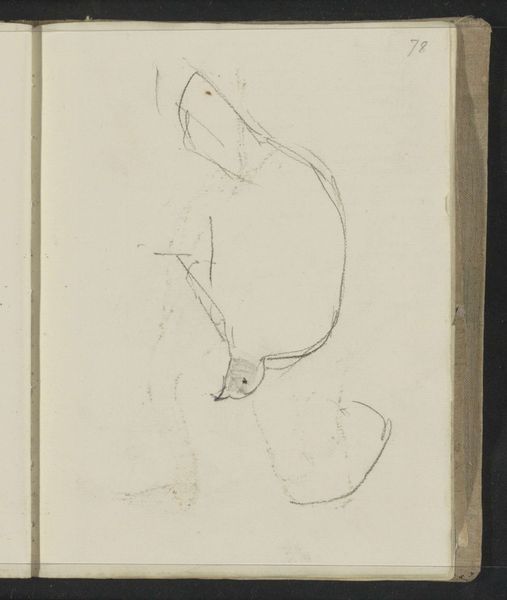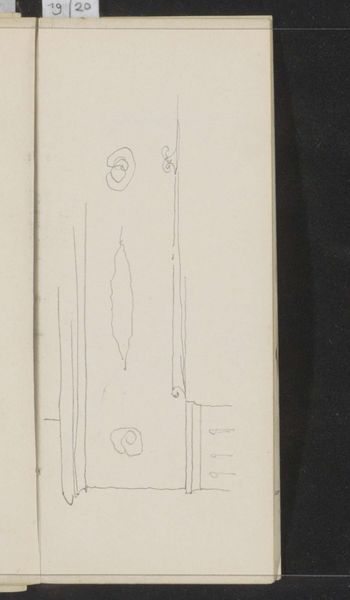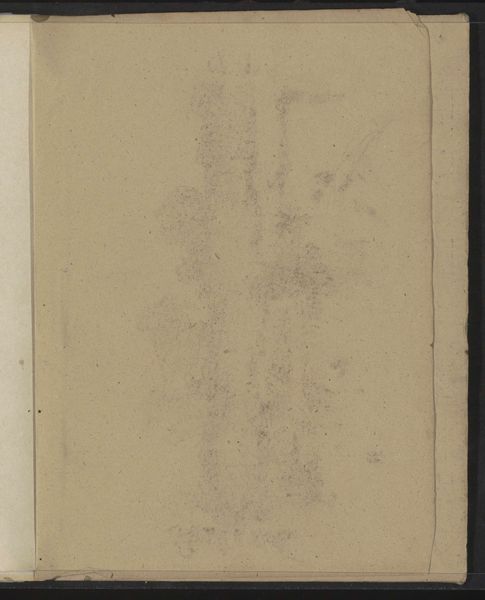
drawing, paper, pencil
#
drawing
#
aged paper
#
art-nouveau
#
quirky sketch
#
sketch book
#
incomplete sketchy
#
hand drawn type
#
paper
#
personal sketchbook
#
idea generation sketch
#
sketchwork
#
geometric
#
pencil
#
line
#
sketchbook drawing
#
sketchbook art
Copyright: Rijks Museum: Open Domain
Curator: Let's turn our attention to "Ornament met rolwerk," a pencil drawing on paper created around 1901 by Gerrit Willem Dijsselhof. This piece currently resides in the Rijksmuseum's collection. Editor: Oh, wow, it feels incredibly fragile and ethereal. Like a whisper from the past, captured in these delicate lines. Is it just me, or does the composition give the feeling that this ornament it being kept back by its frame or its confinement? Curator: That sense of containment speaks to the artistic tensions of the Art Nouveau movement, with its emphasis on ornamentation existing within—and sometimes chafing against—industrial modernity. Dijsselhof, as a key figure in Dutch Art Nouveau, often grappled with the boundaries between pure decoration and its application within broader social and architectural contexts. Think of William Morris and the Arts and Crafts Movement—a rejection of industrial standardization and a focus on craft, handwork and unique design. Editor: Exactly! And you can almost see the push and pull right there on the page. The central spiral seems to yearn outward, beyond those severe vertical lines. Almost rebelling. Do you think the piece would change if these vertical bars werent’t so clear, but hinted at? Curator: Precisely. Those lines, those boundaries, represent so much. They speak to colonial power structures embedded in design, gendered expectations of domestic space, even the political role of ornamentation in a rapidly changing society. These artists weren't merely decorating; they were engaging in a dialogue about progress, identity, and control. Editor: Its just like that quote “form follows function," right? Which then begs the question—what's the ornament's function in this sketch, or perhaps, what function does Dijsselhof intend it to fulfill? The Art Nouveau style gives it such an ornate sense, making it almost feel counter-intuitive to any social cause. Curator: The social cause lies in reimagining those visual languages themselves, injecting subversive visual elements that challenge societal norms that seem palatable to an art consuming public. Editor: Right. What initially seemed simple opens up into a whole universe of layered meanings. The incompleteness even feels like a kind of invitation. What happens beyond the frame? I like that sense of mystery, especially given the rigid constraints the artist faced. Curator: I think what resonates most for me is that we see a small slice of artistic labor: concept rendered into drawing that gestured towards an actual application that can be read within the constraints and potentials of the time. Editor: Absolutely, a powerful message. What begins as an idea on paper becomes a powerful statement on the boundaries and limitations that are set for the creator. A piece for our own time, certainly.
Comments
No comments
Be the first to comment and join the conversation on the ultimate creative platform.
